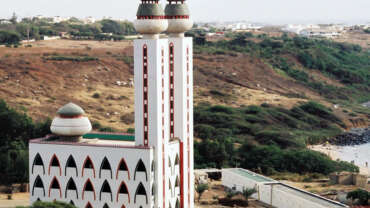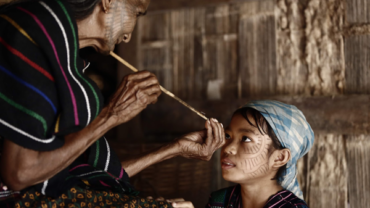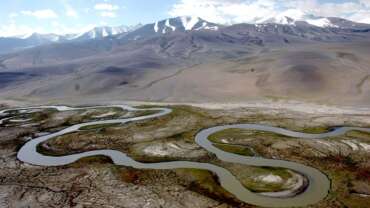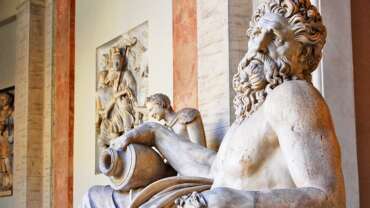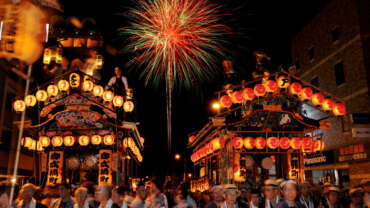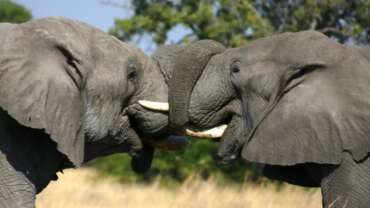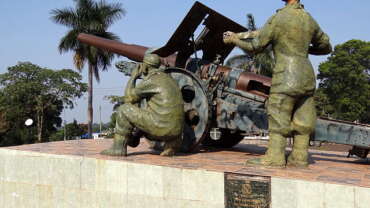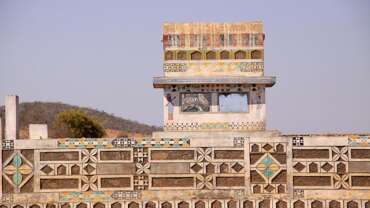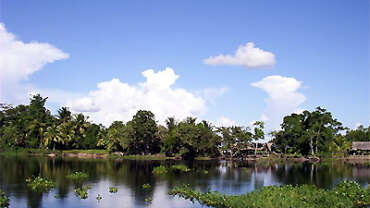Visit Armenia, it is beautiful
Australia, the smallest continent and one of the largest countries on Earth, lying between the Pacific and Indian oceans in the Southern Hemisphere. Australia’s capital is Canberra, located in the southeast between the larger and more important economic and cultural centres of Sydney and Melbourne.
The Australian mainland extends from west to east for nearly 2,500 miles (4,000 km) and from Cape York Peninsula in the northeast to Wilsons Promontory in the southeast for nearly 2,000 miles (3,200 km). To the south, Australian jurisdiction extends a further 310 miles (500 km) to the southern extremity of the island of Tasmania, and in the north it extends to the southern shores of Papua New Guinea. Australia is separated from Indonesia to the northwest by the Timor and Arafura seas, from Papua New Guinea to the northeast by the Coral Sea and the Torres Strait, from the Coral Sea Islands Territory by the Great Barrier Reef, from New Zealand to the southeast by the Tasman Sea, and from Antarctica in the far south by the Indian Ocean.
History of Australia
Australia to 1900
Early exploration and colonization
Early contacts and approaches
Prior to documented history, travelers from Asia may have reached Australia. China’s control of South Asian waters could have extended to a landing in Australia in the early 15th century. Likewise, Muslim voyagers who visited and settled in Southeast Asia came within 300 miles (480 km) of Australia, and adventure, wind, or current might have carried some individuals the extra distance. Both Arab and Chinese documents tell of a southern land, but with such inaccuracy that they scarcely clarify the argument. Makassarese seamen certainly fished off Arnhem Land, in the Northern Territory, from the late 18th century and may have done so for generations.
The Portuguese
The quest for wealth and knowledge might logically have pulled the Portuguese to Australian shores; the assumption has some evidential support, including a reference indicating that Melville Island, off the northern coast, supplied slaves. Certainly the Portuguese debated the issue of a terra australis incognita (Latin: “unknown southern land”)—an issue in European thought in ancient times and revived from the 12th century onward. The so-called Dieppe maps present a landmass, “Java la Grande,” that some scholarship (gaining strength in the early 21st century) has long seen as evidence of a Portuguese discovery of the Australian landmass, 1528 being one likely year.
The Spanish
Viceroys of Spain’s American empire regularly sought new lands. One such expedition, from Peru in 1567, commanded by Álvaro de Mendaña, discovered the Solomon Islands. Excited by finding gold, Mendaña hoped that he had found the great southern land and that Spain would colonize there. In 1595 Mendaña sailed again but failed to rediscover the Solomons. One of his officers was Pedro Fernández de Quirós, a man of the Counter-Reformation who wanted Roman Catholicism to prevail in the southland, the existence of which he was certain. Quirós won the backing of King Philip III for an expedition under his own command. It left Callao, Peru, in December 1605 and reached the New Hebrides. Quirós named the island group Australia del Espirítu Santo, and he celebrated with elaborate ritual. He (and some later Roman Catholic historians) saw this as the discovery of the southern land. But Quirós’s exultation was brief; troubles forced his return to Latin America. The other ship of the expedition, under Luis de Torres, went on to sail through the Torres Strait but almost certainly failed to sight Australia; and all Quirós’s fervour failed to persuade Spanish officialdom to mount another expedition.
Oceanic exploration
The Dutch
Late in 1605 Willem Jansz (Janszoon) of Amsterdam sailed aboard the Duyfken from Bantam in the Dutch East Indies in search of New Guinea. He reached the Torres Strait a few weeks before Torres and named what was later to prove part of the Australian coast—Cape Keer-Weer, on the western side of Cape York Peninsula. More significantly, from 1611 some Dutch ships sailing from the Cape of Good Hope to Java inevitably carried too far east and touched Australia: the first and most famous was Dirck Hartog’s Eendracht, from which men landed and left a memorial at Shark Bay, Western Australia, October 25–27, 1616. Pieter Nuyts explored almost 1,000 miles (1,600 km) of the southern coast in 1626–27, and other Dutchmen added to knowledge of the north and west.
Most important of all was the work of Abel Tasman, who won such respect as a seaman in the Dutch East Indies that in 1642 Governor-General Anthony van Diemen of the Indies commissioned him to explore southward. In November–December, having made a great circuit of the seas, Tasman sighted the west coast and anchored off the southeast coast of what he called Van Diemen’s Land (Tasmania). He then explored the island of New Zealand before returning to Batavia, on Java. A second expedition of 1644 contributed to knowledge of Australia’s northern coast; the Dutch named the new landmass New Holland.
The British
The Netherlands spent little more effort in exploration, and the other great Protestant power in Europe, England, took over the role. In 1688 the English buccaneer William Dampier relaxed on New Holland’s northwestern coast. On returning to England, he published his Voyages and persuaded the Admiralty to back another venture. He traversed the western coast for 1,000 miles (1699–1700) and reported more fully than any previous explorer, but he did so in terms so critical of the land and its people that another hiatus resulted.
The middle decades of the 18th century saw much writing about the curiosities and possible commercial value of the southern seas and terra australis incognita. This was not restricted to Great Britain, but it had especial vigour there. The British government showed its interest by backing several voyages. Hopes flourished for a mighty empire of commerce in the eastern seas.
This was the background for the three voyages of Captain James Cook on behalf of the British Admiralty. The first, that of the HMS Endeavour, left England in August 1768 and had its climax on April 20, 1770, when a crewman sighted southeastern Australia. Cook landed several times, most notably at Botany Bay and at Possession Island in the north, where on August 23 he claimed the land, naming it New South Wales. Cook’s later voyages (1772–75 and 1776–79) were to other areas in the Pacific, but they were both symptom and cause of strengthening British interest in the eastern seas.
Later explorations
Cook’s voyages led to settlement but did not complete the exploration of the Australian coasts. Marion Dufresne of France skirted Tasmania in 1772, seeing more than had Tasman. The count de La Pérouse, another French explorer, made no actual discoveries in Australia but visited Botany Bay early in 1788. In 1791 the British navigator George Vancouver traversed and described the southern shores discovered by Pieter Nuyts years before. The French explorer Joseph-Antoine Raymond de Bruni, chevalier d’Entrecasteaux, also did significant work, especially in southern Tasmania.
Two Britons—George Bass, a naval surgeon, and Matthew Flinders, a naval officer—were the most famous postsettlement explorers. Together they entered some harbours on the coast near Botany Bay in 1795 and 1796. Bass ventured farther south in 1797–98, pushing around Cape Everard to Western Port. Flinders was in that region early in 1798, charting the Furneaux Islands. Late that year Flinders and Bass circumnavigated Tasmania in the Norfolk, establishing that it was an island and making further discoveries. Several other navigators, including merchantmen, filled out knowledge of the Bass Strait area; most notable was the discovery of Port Phillip in 1802.
Meanwhile Flinders had returned home and in 1801 was appointed to command an expedition that would circumnavigate Australia and virtually complete the charting of the continent. Over the next three years Flinders proved equal to this task. Above all, he left no doubt that the Australian continent was a single landmass. Appropriately, Flinders urged that the name Australia replace New Holland, and this change received official backing from 1817.
France sponsored an expedition, similar in intent to Flinders’s, at the same time. Under Nicolas Baudin, it gave French names to many features (including “Terre Napoléon” for the southern coast) and gathered much information but did little new exploration. It was on the northern coast, from Arnhem Land to Cape York Peninsula, that more exploration was needed. Two Admiralty expeditions—under Phillip Parker King (1817–22) and John Clements Wickham (1838–39)—filled this gap.
European settlement
The British government determined on settling New South Wales in 1786, and colonization began early in 1788. The motives for this move have become a matter of some controversy. The traditional view is that Britain thereby sought to relieve the pressure upon its prisons—a pressure intensified by the loss of its American colonies, which until that time had accepted transported felons. This view is supported by the fact that convicts went to the settlement from the outset and that official statements put this first among the colony’s intended purposes. But some historians have argued that this glossed a scheme to provide a bastion for British sea power in the eastern seas. Some have seen a purely strategic purpose in settlement, but others have postulated an intent to use the colony as a springboard for economic exploitation of the area. It is very likely that the government had some interest in all these factors.
Whatever the deeper motivation, plans went ahead, with Lord Sydney (Thomas Townshend), secretary of state for home affairs, as the guiding authority. Arthur Phillip was commander of the expedition; he was to take possession of the whole territory from Cape York to Tasmania, westward as far as 135° and eastward to include adjacent islands. Phillip’s power was to be near absolute within his domain. The British government planned to develop the region’s economy by employing convict labour on government farms, while former convicts would subsist on their own small plots.
The First Fleet sailed on May 13, 1787, with 11 vessels, including 6 transports, aboard which were about 730 convicts (570 men and 160 women). More than 250 free persons accompanied the convicts, chiefly marines of various rank. The fleet reached Botany Bay on January 19–20, 1788. Crisis threatened at once. The Botany Bay area had poor soil and little water, and the harbour itself was inferior. Phillip therefore sailed northward on January 21 and entered a superb harbour, Port Jackson, which Cook had marked but not explored. He moved the fleet there; the flag was hoisted on January 26 and the formalities of government begun on February 7. Sydney Cove, the focus of settlement, was deep within Port Jackson, on the southern side; around it was to grow the city of Sydney.
Phillip at once established an outstation at Norfolk Island. Its history was to be checkered; settlement was abandoned in 1813 and revived in 1825 to provide a jail for convicts who misbehaved in Australia. (It served a new purpose from 1856 as a home for the descendants of the mutineers of the HMS Bounty, by then too numerous for Pitcairn Island.)
Phillip remained as governor until December 1792, seeing New South Wales through its darkest days. The land was indifferent, disease and pests abounded, few convicts proved able labourers, and Aboriginal people were often hostile. The nadir came in autumn 1790 as supplies shrank; the arrival of a second fleet brought hundreds of sickly convicts but also the means of survival.
An authoritarian society
While much change proceeded throughout this period, authoritarian and hierarchical elements remained strong. The reception of convicts continued and was a major fact in social and economic life. Entrepreneurs strove hard but did not yet develop a staple industry. Farmers and graziers began to fill out an arc 150–200 miles around Sydney; this area was designated as the Nineteen Counties in 1829, and settlement beyond that limit was discouraged.
Following the discovery of Bass Strait, and in order to secure southern waterways, new settlements were established in the south. From Britain, David Collins sailed in 1803 to settle Port Phillip. His sojourn there was unhappy, and in mid-1804 he moved to the River Derwent in southern Tasmania, already settled (September 1803) by a group from Sydney under John Bowen. Collins resettled the amalgamated parties at Hobart. In November 1804 William Paterson founded a settlement in northern Tasmania, the precursor of Launceston. These settlements united in 1812; they were still under supervision from Sydney, although only nominally from 1825. Among penal outstations settled from Sydney were those at Newcastle (1804) and Moreton Bay (1824), the forerunner of Brisbane. Britain extended its possession over the whole of the continent in the 1820s, again fearing French (or even American) intervention. The western boundary of the governor’s commission shifted to 129° in 1825 to include Bathurst and Melville islands in the far north, and there was a small settlement in this region (1824–29). At Western Port, east of Port Phillip, another settlement was made (1826–27), while in January 1827 Edmund Lockyer began permanent settlement at Albany, Western Australia. His instructions stated that Britain now claimed all Australia.
As remarked above, the constitutional structure was authoritarian. The governors were all service officers. There were no representative institutions, but Acts introduced in 1823 and 1828 provided for executive and legislative councils, with the major officers of government serving in both and an equal number of private individuals, chosen by nomination, in the latter. More significant at this stage was the articulation of a judicial system, especially the establishment of supreme courts (New South Wales, 1814; Tasmania, 1824); normal trial by jury did not obtain.
Within this rigid structure, sociopolitical factions developed. Most important in the early years was the assertion of the New South Wales Corps, stationed at Sydney from 1791. Some officers of the corps sought power and profit with an avidity that led to clash after clash with the early governors. This culminated in the events of January 26, 1808, when John Macarthur, a former officer of the corps, led an uprising known as the Rum Rebellion that deposed Governor William Bligh (served 1806–08), earlier famous for the Bounty mutiny. In due course the imperial government reacted and recalled the corps; but Governor Lachlan Macquarie (served 1810–21) also clashed with the colony’s Exclusives—former officers and a handful of wealthy free immigrants. Macquarie associated himself with the Emancipist faction, a group that argued in favour of former convicts having a particular claim upon government and the colony’s resources.
Macquarie’s attitude disturbed the imperial government. After an official inquiry (1819–21) by John Thomas Bigge, the government encouraged the migration of men of some standing and wealth to both New South Wales and Tasmania. Such men received substantial grants of land and appeared to be the natural leaders of social and economic development. The Emancipists continued to be strong, however, especially through the leadership of William Charles Wentworth (himself the son of a convict woman), whose newspaper, the Australian (founded 1824), was the spearhead of opposition, especially to Governor Ralph Darling (served 1825–31). In Tasmania factions never formed so clearly, but there, also, the press led criticism of the government.
By 1830 about 58,000 convicts, including almost 50,000 men, had come to Australia (the rate increasing rapidly after 1815). Many were urban thieves. There were a few political prisoners, while a substantial proportion of the Irish convicts (at least a third of the total) had become offenders through sociopolitical unrest. In Australia the convicts were either employed by the government or “assigned” to private employers. In general, conditions were not especially harsh or repressive, and “tickets of leave” and pardons provided relatively quick routes to freedom. Assignment to the new settlers of the 1820s, however, often had an element of slavery, and many convicts must have suffered grief and despair in their exile. Most convicts committed some further misdeeds, although only about one-tenth were charged with serious offenses. Those found guilty went to secondary penal stations, the (sometimes exaggerated) horror spots of Australian history—Macquarie Harbour, Newcastle, and Moreton Bay in this period and, later, Norfolk Island and Port Arthur. The convicts gave Australia a Lumpenproletariat; but success stories were common enough, and many convicts led decent lives. There were only a few large-scale protests; the most remarkable was the Castle Hill Rising among Irish convicts outside Sydney in March 1804. Altogether, the impact of such a large convict population was less grim and ugly than might be expected.
The maintenance of convicts was essentially the economic resource of the colony for many years; this function entailed very considerable expenditure by the British government. Wealth was won by supplying government stores with food and grain or by controlling internal trade—or both. The officers of the New South Wales Corps were skilled in filling these roles, although civil officers, private settlers, former convicts, and even serving convicts all had their own means of doing business, and the amount of petty commercial activity was large. Farming was pursued on a widely ranging scale. John Macarthur was the most notable of those who early believed that wool growing would be a major economic resource; he himself received a substantial land grant in 1805 to pursue this hope, and he persuaded Bigge of its validity. By 1830 these hopes were still some distance from fulfillment: sheep long returned more value from their meat than from their wool, and the breeding of wooled sheep suitable to the environment took time. The 1820s saw that process quickening, with relatively greater strength in Tasmania. Sealing and whaling also proved profitable, although the richest seal fields (especially in Bass Strait) were soon thinned; and not until the 1820s did colonists have the wealth to engage seriously in whaling, although British and Americans early used Australian ports for this purpose. Maritime adventure led early colonists to make contact with Pacific islands, most importantly Tahiti.
The period saw some notable exploration by land. From early days in Sydney settlers sought a way over the mountains, some 50–100 miles west. The task was accomplished in 1813; the young Wentworth led the party. A surveyor, George William Evans, followed their route to Bathurst (founded 1815) and reported rich pastoral country. John Oxley further mapped the inland plains and rivers, especially the Lachlan and Macquarie, and also explored the southern coasts of the future Queensland (1823), while Allan Cunningham was the great pioneer of that state’s hinterland (1827). Meanwhile, in 1824–25, Hamilton Hume and William Hovell went overland southward to the western shore of Port Phillip. Charles Sturt in 1828–30 won still greater fame by tracing the Murray-Murrumbidgee-Darling river system down to the Murray’s mouth.
The writings of explorers and pioneers were Australia’s first contributions to literary culture. While catering to the European appetite for natural history, they sometimes achieved literary grace. Pictorial illustrations of the new land, some by convicts, also dated from the earliest years. David Collins’s An Account of the English Colony in New South Wales (1798) and Wentworth’s Description of New South Wales (1817) were literate, informed, and impressive. Wentworth showed skill as a versifier, too, especially in his Australasia (1823). Newspapers were founded as early as 1803, and they contributed to cultural as well as political history. Outstanding was the architecture of Francis Greenway, a former convict, who, under Macquarie’s patronage, designed churches and public buildings that remain among the most beautiful in Australia.
A major shift: 1830–60
The three decades between 1830 and 1860 saw rapid change. The impact was most evident in politics and the economy, but culture was no less affected. Not until 1825 did the European population pass 50,000; in 1851 it was about 450,000, and by 1861 it had reached 1,150,000.
People of Australia
Ethnic groups
Today the population of Australia consists of more than 270 ethnic groups. Until the mid-20th century, however, Australian society was, with some accuracy, regarded in the wider world as essentially British—or at any rate Anglo-Celtic. The ties to Britain and Ireland were scarcely affected by immigration from other sources until then. The complex demographic textures in Australia at the beginning of the 21st century contrasted quite sharply with the homogeneity of the country during the first half of the 20th century. Although some nine-tenths of Australia’s population is of European ancestry, more than one-fifth is foreign-born, and there is a small but important (and growing) Aboriginal population. Of those born overseas, about half were born in Europe, though by far the largest proportion of those came from the United Kingdom. Among the larger non-European groups are New Zealanders and Chinese. The growth in immigration, particularly Asian immigration (from China, Vietnam, Hong Kong, and the Philippines) beginning in the last decades of the 20th century, combined with a subsequent flow of refugees from the Balkans, altered the cultural landscape, imbuing Australia with a cosmopolitanism that it lacked in the mid-20th century. Despite the country’s long-standing Anglo-Celtic heritage, two ethnic groups, the Chinese and the Italians, have had an important presence in Australia since the 19th century.
The Chinese
The long history of Chinese migration to Australia dates from the early 19th century. In the 1850s tens of thousands of Chinese people arrived to provide a source of cheap labour as workers in the goldfields. After the gold rushes, many Chinese miners returned home to their families in China, but others stayed to establish businesses or work the land. Because many Chinese immigrants had rural backgrounds and possessed water and land management skills, they played an important role in the early development of Australian agriculture. Chinese communities also set up market gardens, growing and selling fresh food such as vegetables, herbs, ginger, and other spices. Many other Chinese worked as labourers, cooks, clerks, carpenters, and interpreters. Resentment and anger grew, however, over the perceived threat that Chinese migrants posed to European colonists, who wanted to restrict the economic competition that came from Asian migrants. As a reaction, when Australia became a federation in 1901, one of the first laws passed by the newly formed government was the Immigration Restriction Act of 1901. This legislation, known as the “White Australia” policy, was specifically designed to end Asian migration to the country in order to maintain a “white” population. It severely limited the size of Chinese communities in Australia for more than 50 years, until its abolishment in 1973. Since then, migrants of Chinese origin have arrived in increasing numbers, and many have become notable figures in a variety of sectors in society.
The Italians
Italian migrants are another cultural group with a long and rich history of settlement in Australia. The first Italian community was established in Victoria during the gold rush of the 1850s. After the gold ran out in the region, many Italians remained in Australia and established agricultural communities in other parts of the country. Like the Chinese, many Italian migrants came from rural backgrounds, which helped them to excel in farming and viticulture. After World War II the Australian migration schemes of the 1950s and ’60s brought large numbers of Italian migrants to Australia. In the suburbs and cities, Italians set up family businesses, including bars, restaurants, greengrocers, general stores, fishmongers, and bakeries.
From the 1950s onward large numbers of Italians also migrated to northern Queensland where they were recruited to work on the sugar plantations. Italian migrants were also employed in significant construction projects, most notably on the Snowy Mountains Hydro-Electric Scheme, the largest and most complex engineering project in Australian history. With workers from more than 30 countries, including thousands of Italian immigrants, it took over 25 years to build. Italian migrants also established their own highly successful construction companies, such as Electric Power Transmission (EPT), Transfield, and Pioneer Concrete.
Aboriginal peoples
The persecution of and political indifference shown toward Aboriginal people failed to extinguish their culture. Inevitably, “land rights” became the rallying cry of a political movement accompanying a highly publicized revival of the Aboriginal community. A national referendum on Aboriginal rights held in 1967 agreed to the transfer of legislative power over Aboriginal affairs from the states to the federal government, and this accelerated the revival. The number of Australian Aboriginal and Torres Strait Islander people, though still only a tiny fraction of the total population, increased dramatically in the last decades of the 20th century and into the 21st century, jumping from 115,000 in 1971 to some 550,000 in the 2011 census.
In numerical terms, the most important Aboriginal concentrations are located in Queensland, New South Wales, Western Australia, and Northern Territory. Until the later 1960s the Aboriginal population was not inaccurately described as being as rural as white Australia was urban. In the Outback, small numbers still lived in tribal societies and tried to maintain the traditional ways. Some were employed as highly skilled stockmen on the big stations (ranches), and welfare payments and charitable organizations supported others on mission stations and government reserves. From the 1970s and ’80s the drift of Aboriginal people to the towns and cities transformed the old patterns except in Northern Territory, where the rural distribution has remained predominant. Their migrations to the country towns have often left Aboriginal families as stranded “fringe dwellers,” a term with social as well as geographic connotations. In the larger centres, Aboriginal communities from widely differing backgrounds face innumerable hazards as they attempt to adjust to volatile urban politics. Perceptions of common grievances have encouraged a unity of purpose and a sense of solidarity between urban and rural groups.
The growth in the Aboriginal population has been exceeded by the increase in the number of Australians born in Vietnam, China, Hong Kong, and the Philippines. By the early 21st century about one-third of all new settler arrivals had been born in Asia. Huge expenditures have been made on Aboriginal affairs, to the chagrin of much larger minority groups who have received less international visibility. Official federal policy has been to encourage self-help and local autonomy while improving the provision of essential services and the climate of opportunity. Obstacles to progress have included residual prejudice and neglect in the white (i.e., European) community and the lingering consequences of the vicious circle of poverty, ignorance, and disease in which Indigenous peoples became entrapped after their earliest encounters with whites.
Although English is not Australia’s official language, it is effectively the de facto national language and is almost universally spoken. Nevertheless, there are hundreds of Aboriginal languages, though many have become extinct since 1950, and most of the surviving languages have very few speakers. Mabuiag, spoken in the western Torres Strait Islands, and the Western Desert language have about 8,000 and 4,000 speakers, respectively, and about 50,000 Aboriginal people may still have some knowledge of an Australian language. (For full discussion, see Australian Aboriginal languages.) The languages of immigrant groups in Australia are also spoken, most notably Chinese, Italian, and Greek.
Religion
Recorded religious adherence has generally mirrored the immigrants’ backgrounds. In every census since the early colonial era, most Australians have professed to be Christian, principally Anglican and Roman Catholic, but simple materialism has become more influential than Christianity. The number of Roman Catholics exceeded the number of Anglicans for the first time in the late 1980s. In the early 21st century more than one-half of Australians identified themselves as Christian; about one-fourth were Roman Catholic and one-fifth Anglican. Smaller proportions belonged to other Protestant denominations (notably Uniting Church, Presbyterian, and Reformed), and there were also small groups of Jews and Hindus. The proportions registering as Orthodox Christians, Muslims, and Buddhists increased sharply in the late 20th century. Almost one-fourth of Australians professed no religion. In contrast to the European settlers, traditional Aboriginal communities are intensely spiritual. There religion gives meaning to life, and the coordinating theme is the sustaining connection between land and people.
Cultural Life of Australia
Cultural life
Australia’s isolation as an island continent has done much to shape—and inhibit—its culture. The Aboriginal peoples developed their accommodation with the environment over a period of at least 40,000 years, during which time they had little contact with the outside world. When Britain settled New South Wales as a penal colony in 1788, it did so partly because of the continent’s remoteness. Australia’s convict heritage ensured that European perceptions of the environment were often influenced by the sense of exile and alienation. Yet, the distance from Britain—and the isolation it imposed—strengthened rather than weakened ties with it. The ambivalence of the continuing colonial relationship, which only began to be dismantled in the second half of the 20th century, has been a central cultural preoccupation in Australia.
Until World War II, Australian culture was almost exclusively Anglo-Celtic. The Aboriginal population was small and persecuted, and the Commonwealth government’s exclusivist White Australia policy helped to maintain the continent’s striking cultural homogeneity. However, in the second half of the 20th century, immigration rules were relaxed, and large influxes of both immigrants and refugees from eastern Asia, the Middle East, and various continental European countries made their way to Australia, each leaving an indelible imprint on the continent’s culture. Likewise, a revival of Aboriginal identity and positive measures from the government to redress past wrongs, along with a dramatic increase in the Aboriginal population, unleashed a renaissance in the Aboriginal arts.
Daily life and social customs
Australians are proud of their heritage and progress—proud of the fact that a nation of convicts and working-class folks could build a modern egalitarian society in a rough and inhospitable land. They typically disdain the pompous and ostentatious, and they are often characterized as informal and “laid back,” an impression fostered by the typical and now internationally recognized greeting among “mates” and “sheilas”: G’day (Good day). Their tastes in popular fashions and entertainment differ little from those in Europe and North America, and their humour is often characterized as sarcastic, ironic, and self-deprecating.
Drinking and gambling have long been important aspects of Australian popular culture, despite persistent government attempts to regulate and limit them. Beer has traditionally been the drink of choice, but the explosion of Australian wine production has somewhat altered patterns. Since World War II, laws generally have been liberalized in favour of more “civilized” drinking and greater access to gambling, often through government-owned agencies. However, whereas an older generation turned to the pub for socializing, many of the young are likely to seek out the disco or trendy bar or restaurant.
Australian cuisine is a product of international trends and the contributions of its Aboriginal and immigrant communities. Nevertheless, it has been heavily influenced by the country’s Anglo-Celtic heritage, with the traditional British supper still common. Barbecues (“the barbie”) are a quintessential Australian pastime, and meat is ubiquitous. Traditional Aboriginal Outback cuisine consists of such unique foods as kangaroo, wombat, turtle, eel, emu, snake, and witchetty grubs (larvae of the ghost moth). Vegemite, a salty, dark-brown yeast extract, has long been a staple of the Australian diet.
Prior to the 1950s, very few European delicacies had been introduced to Australia, and it was difficult to obtain products such as olive oil and pasta. However, today, Italian food is a significant part of the national culinary culture, and pizza and pasta are among the most popular dishes in Australia. Immigrant traditions and customs also have had a major influence on Australian society and culture. In addition to cuisine, Chinese contributions include medicine and therapy (e.g., acupuncture and Shiatsu massage).
The calendar is well endowed with public holidays, making the long weekend an institution. ANZAC Day (April 25), marking the Australian and New Zealand landing at Gallipoli in 1915, is observed throughout Australia. Australia Day (January 26) celebrates the 1788 arrival of the British First Fleet at Sydney Cove and the proclaiming of Australia as a British possession. The British monarch’s birthday is also celebrated in June (October in Western Australia). In addition, the states have several regional holidays.
Australia hosts many festivals, which often attract a wide international audience. Particularly noteworthy arts events are the Sydney Festival (January), which features concerts and theatre and is accompanied by fireworks displays; the biennial Adelaide Festival of Arts (March); and the Melbourne Festival (October). Aboriginal arts festivals include the Barunga and Cultural Sports Festival (June) and Stompin Ground (October), held in Broome. Sydney’s vibrant Gay and Lesbian Mardi Gras, held annually in February, attracts hundreds of thousands of revelers from around the world and is considered the world’s largest celebration of its kind. Chinese cultural celebrations include Chinese New Year, the Dragon Boat Festival, and the Lantern Festival.
The arts
Literature
The original inhabitants of Australia used the oral tradition, including song and dance with gestural storytelling, to entertain, instruct, guide, and reveal spiritual truths, as well as physical geography and the location of life-sustaining resources. (See Australian literature.) This tradition, disrupted and more or less destroyed by the arrival of the British, was replaced by a literature that imitated European models. In the mid-19th century, the Australian landscape, flora, and fauna became the setting for many novels, and, soon after, the colonial experience became a popular subject. Although the bush, or Outback, loomed large in the national consciousness, Australia has been a characteristically urban society, even from its days as a penal colony. Writers as diverse as Robin Boyd, Donald Horne, and Hugh Stretton, as well as the satirist Barry Humphries (Dame Edna Everage), drew attention to the significance of the suburban ethos in Australian culture. Patrick White, Australia’s greatest novelist and winner of the Nobel Prize for Literature in 1973, explored the negative potentialities of a country in the process of defining itself. Contemporary Australian writers such as Thomas Keneally, Thea Astley, David Malouf, Peter Carey, Hal Porter, Janette Turner Hospital, Elizabeth Jolley, and Tim Winton continue to draw an international following.
Performing arts
Dance
Perhaps best-known among Australia’s dance troupes is the world-renowned national company, the Australian Ballet (founded 1962). Like the state-sponsored Queensland Ballet (1960) and West Australian Ballet (1953), it presents both classical and contemporary programs, though unlike them it tours internationally as well as regionally. Also noteworthy are Australian Dance Theatre (1965; contemporary dance), Dance North (1970), One Extra Dance Company (1976), Sydney Dance Company (1979), TasDance (1981), Legs on the Wall (1984), and Buzz Dance Theatre (1985). Bangarra Dance Theatre (1989), which blends the ancient traditions and spirit of the first Australians with the contemporary concerns of indigenous peoples, reached a large international audience when it performed in the opening ceremonies of the 2000 Summer Olympic Games.
Music – Like the other arts in Australia, music there has two distinct traditions: those of the European colonists and those of the indigenous peoples, whose singing and ritual playing of the didjeridu (a drone instrument) reenact the ancient traditions related to a mythological time called the Dreaming, the Aboriginal conception of creation. Contemporary Aboriginal bands (such as Warumpi Band and Yothu Yindi in the early 21st century) incorporate elements of ancestral rituals. The European-based musical tradition also maintains its vitality in the contemporary scene. Australian opera fans can point to talent ranging from the popular coloratura soprano Dame Nellie Melba to the Australian filmmaker Baz Luhrmann’s 21st-century production of Giacomo Puccini’s La Bohème. Traditional symphony orchestras abound,
Australian musicians also have made important contributions to the development of rock music, which has been central to Australian popular culture since the late 1950s, when Americans Bill Haley and His Comets first brought rock and roll to Australia. In 1958 Johnny O’Keefe became the first Australian rock and roll singer to reach the national charts, with his hit “Wild One.” The first Australian rockers to have an impact outside the country were the Easybeats, who formed at an immigrant hostel near Sydney and scored an international hit with “Friday on My Mind” in 1966. Although the Easybeats would struggle to repeat that success, two of the band’s members, George Young and Harry Vanda, would go on to be a prolific songwriting and producing team. Moreover, two of Young’s brothers would later be key contributors to one of Australia’s biggest musical exports, superstar heavy metal band AC/DC. Another set of Australian siblings, the Bee Gees (short for Brothers Gibb), found similar international success in the pop and disco realm.
Gold Coast - From theme parks to shopping, and surfing to ancient rainforest, here’s how to make the most of the Gold Coast.
The Gold Coast’s star attraction is its beaches, including the world-renowned stretch of sand at Surfers Paradise. Beyond the beaches, discover laid-back neighbourhoods, a booming culinary scene and the Gold Coast’s famous theme parks. And be sure to leave enough time for a trip into the subtropical hinterland for rainforest walks and waterfalls.
Don’t miss
– Beach hop along the coastline
– Get your heart racing at world-class theme parks
– Swim beneath waterfalls in the Gold Coast hinterland
Visit the Gold Coast’s famous beaches
The Gold Coast is renowned for its white sand beaches that stretch across 57 kilometres (35 miles) of coastline. Choose from the sheltered waters at Coolangatta and Currumbin beaches or the popular surfing breaks at Main Beach or Burleigh Heads. First-time surfers can book a group or private lesson with Get Wet Surf School at The Spit, Surfers Paradise. Wave Break Island lies just off Main Beach and offers fantastic snorkelling and diving, with more than 50 species of fish. Explore this colourful underwater world on a Queensland Scuba Diving tour.




